These Brown Thrasher photos were taken during three of the days I photographed from my friend Steve Creek’s deck while I was visiting him in Arkansas. I have had to create so many new galleries for the eastern birds I photographed from his deck and from Oklahoma that I am still going through them.
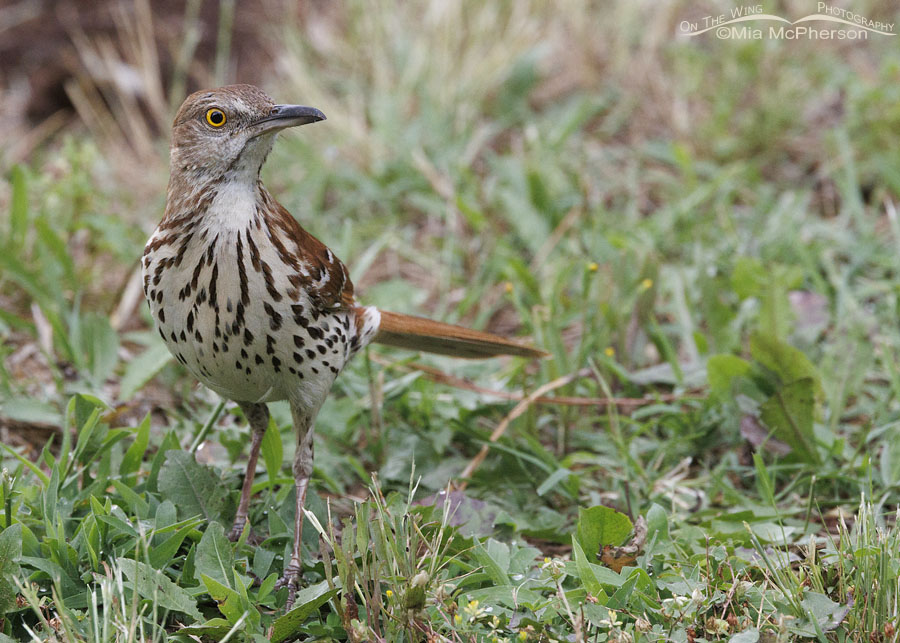 Brown Thrasher looking around in Arkansas
Brown Thrasher looking around in Arkansas
I used to see Brown Thrashers quite often when I lived back east and I have missed seeing these mimids. The last images I took of this species were taken in Florida more than 14 years ago and I haven’t shared any of this species until today.
Brown Thrashers are native to North America and can be found in various habitats such as woodland edges, thickets, scrublands, and gardens. They are primarily resident birds, meaning they do not migrate long distances. However, some populations in the northern parts of their range may move southward during the winter.
Click on the first image below to open a slide show of the larger versions.
Brown Thrashers are known for their extensive song repertoire, which is one of the largest among North American songbirds. They can produce over 1,000 different song variations, incorporating imitations of other bird species, sounds of mechanical objects, and even human-like noises. Each individual Brown Thrasher has its own unique song, and they are highly skilled at mimicking the calls of other birds.
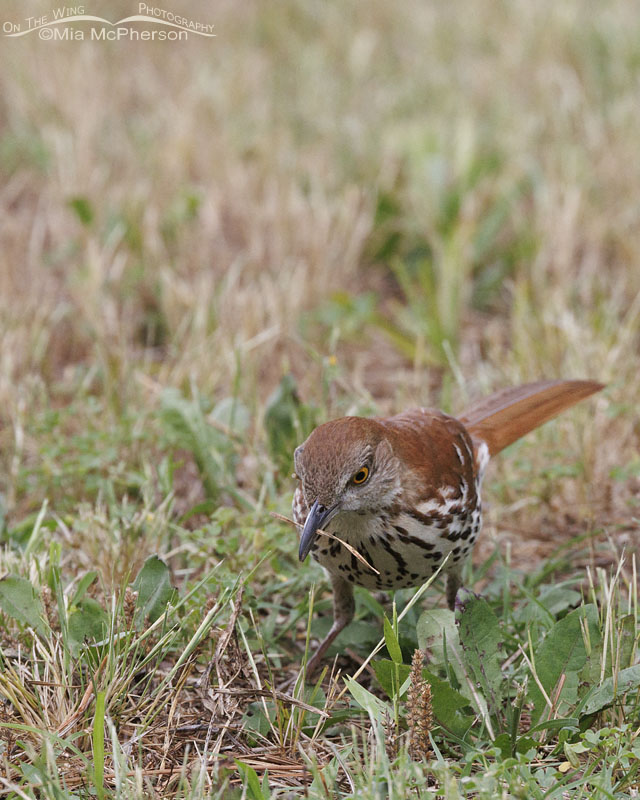 Brown Thrasher with nesting material
Brown Thrasher with nesting material
These Brown Thrashers spent most of their time foraging for food in Steve’s yard while I photographed them except for the one in the photo above which was gathering nesting material. Steve had mentioned that they nest in his yard and this one may have begun the nest building process.
I was tickled to see and photograph this species in Arkansas. I am happy to add these images to my galleries.
Life is good.
Mia
Check here for updates to my Brown Thrasher gallery. I will be adding more images when I have time to process more of them.


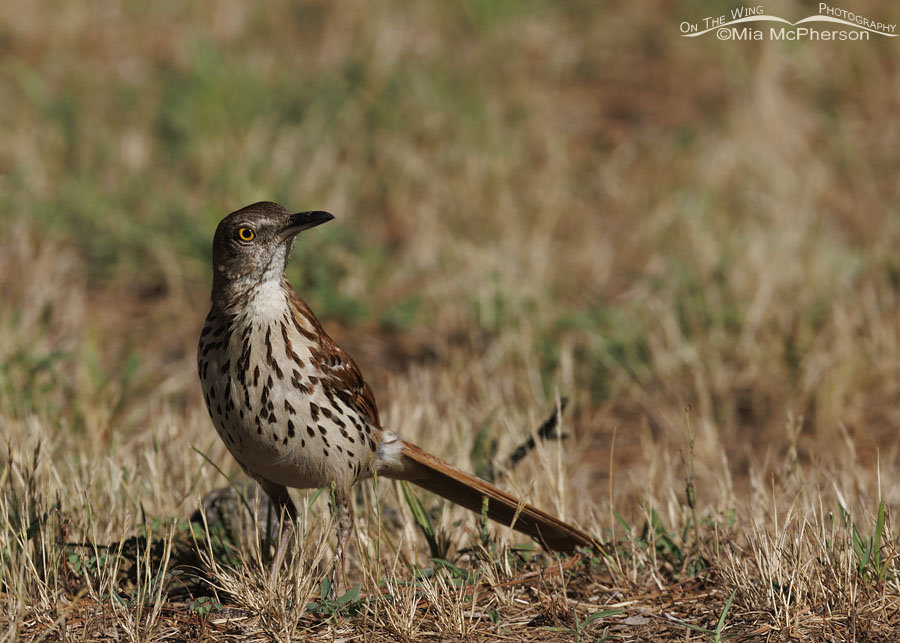
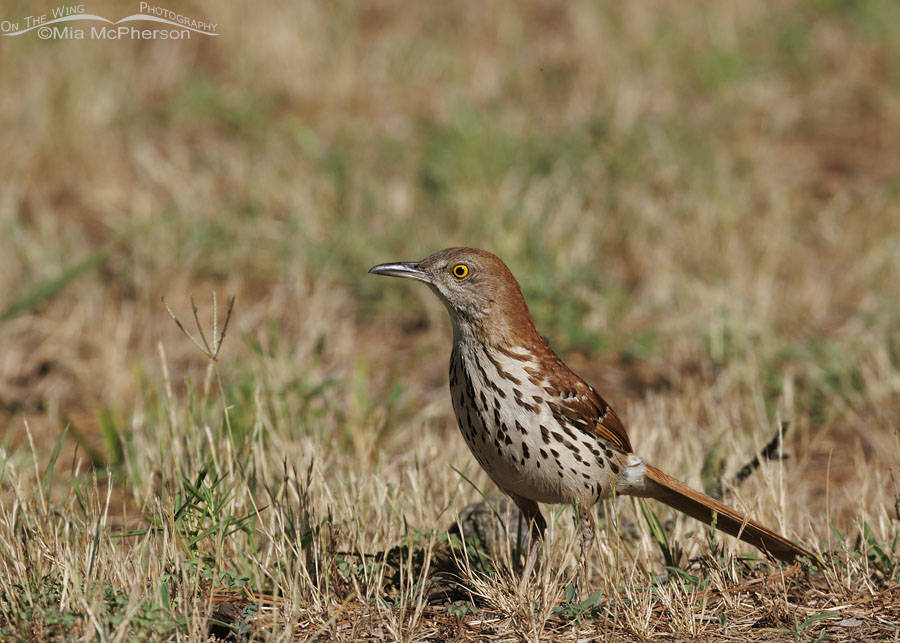
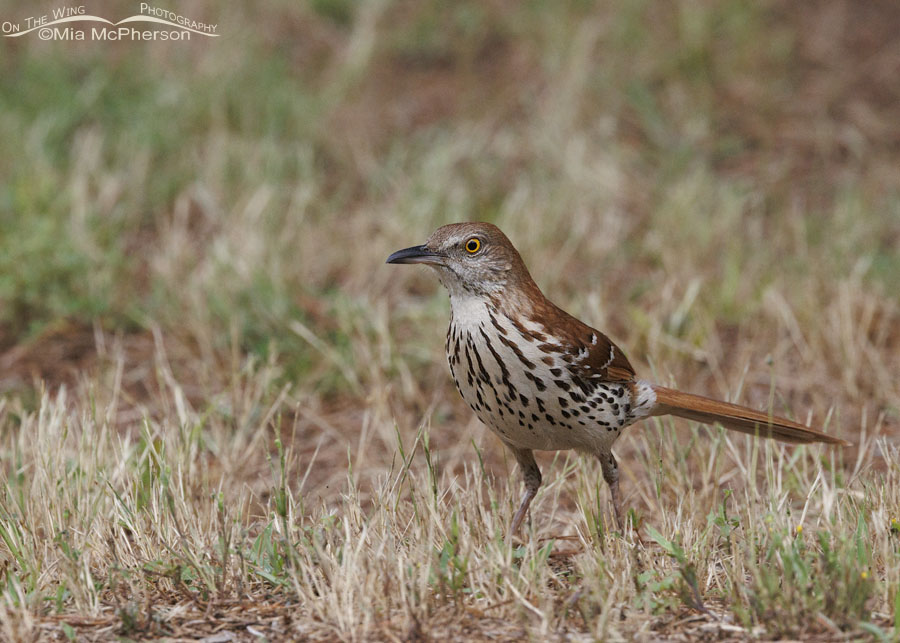
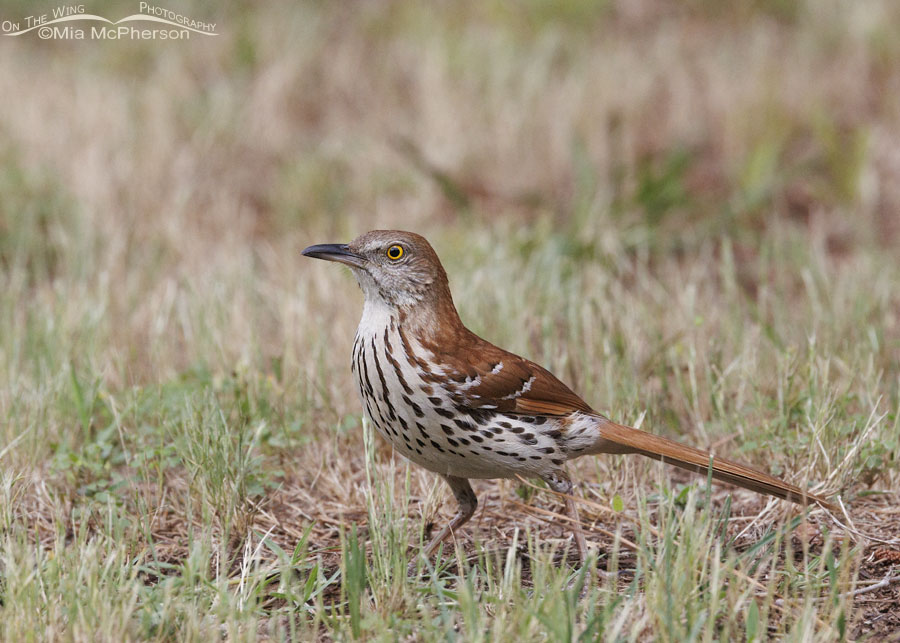
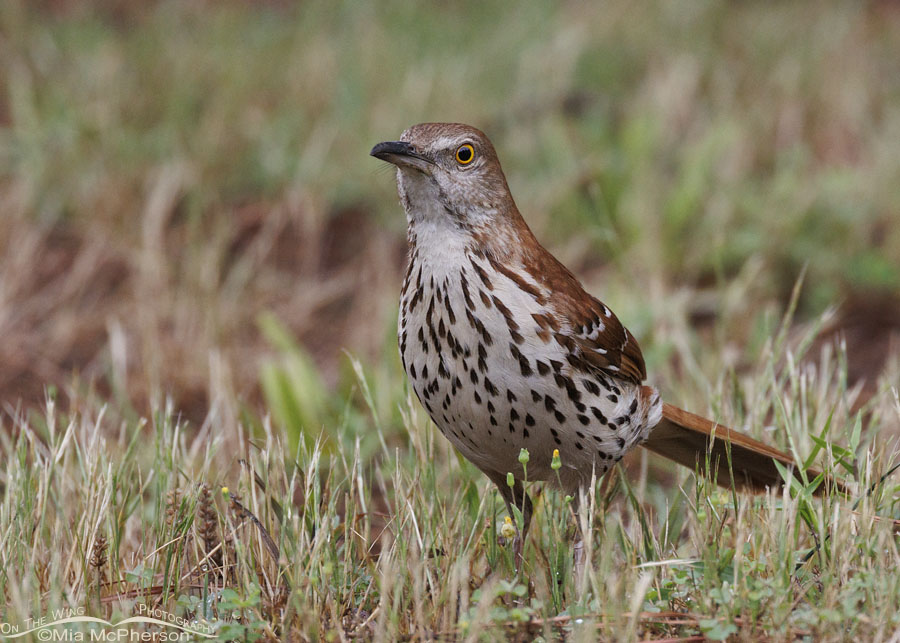
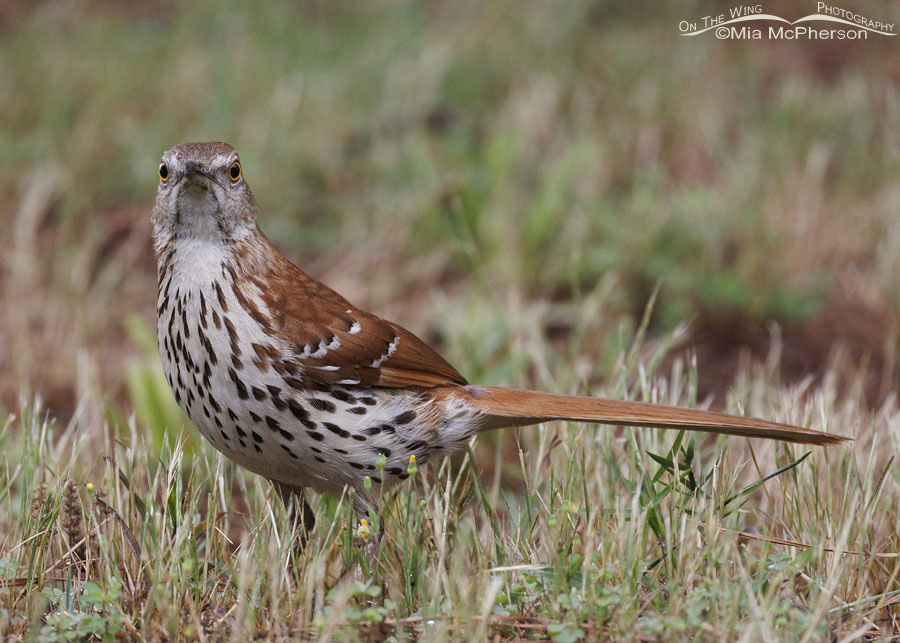
Well, Brown Thrashers are another species to add to my ever-growing list of “Mia newbies”. [i.e., – birds I’ve never known about before your post]. The reddish-brown plumage is really striking. As always, the eye contact and detail is unreal. Thanks Mia.
Beautiful bird and photos. I would like to see one some day.
They are such alert and ‘dapper’ birds.